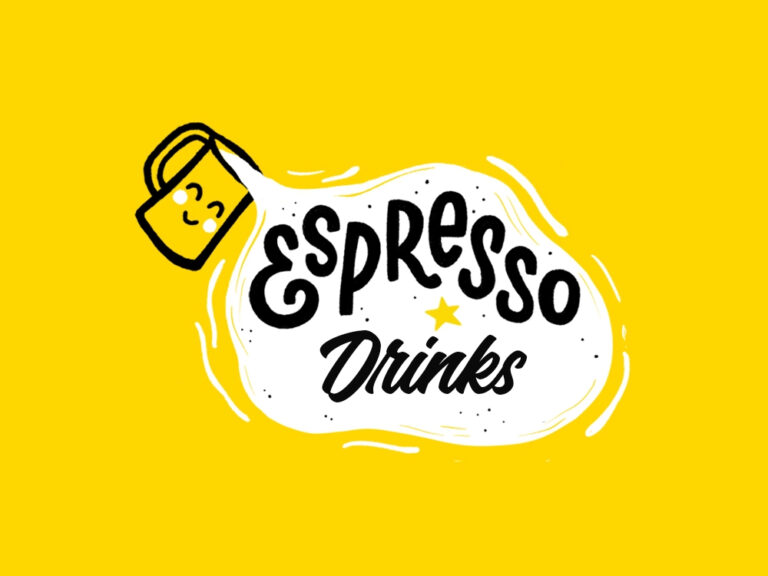
This post may contain affiliate links. As an Amazon Associate and a partner of other brands, I get a small commission if you purchase through my links, at no extra cost from you.
Beyond the cups of Cappuccino and Espresso, there is Dry Cappuccino. I’ll meet you there! ~ Millennial coffee lovers.
Well, although I’ve failed to do justice to this quote, let me ask you something.
If you love both Cappuccino & Espresso and don’t know about dry cappuccino yet, do you know what you’re missing out on?
Let me spill some tea, oops, some coffee for you. 😉 Read on!
Let’s talk about it from the beginning. The very first cappuccino was brewed in Italy during the early 1900s.
Although Espresso machines became popular around this time, they were clunky and only available in specialised cafes.
But the cappuccinos, they screamed, “We are unique!” Yes, the cappuccinos were not created equally. The beverage has taken on many tweaks and twists till today.
The milkier versions have two variations, namely wet and super wet cappuccinos, whereas the variations with very little steamed milk are dry and bone dry cappuccinos.
If you are someone who errs on the side of less steamed milk, you’ve come to the right place.
Here is everything you need to know about dry cappuccino.
What Is a Dry Cappuccino Like?
A traditional cappuccino has 3 elements; espresso, steamed milk, and milk foam in a 1:1:1 ratio. For a dry cappuccino, the ratio is different.
A typical cup of dry cappuccino contains one shot of espresso and a dash of steamed milk, topped with a big dollop of milk foam.
The kind of milk foam used is macrofoam. However, some cafes also prefer to use microfoam.


Taste of Dry Cappuccino
A dry cappuccino has very little milk. Without milk masking the espresso flavor, a dry cappuccino has a richer and more intense taste.
Less milk also means that the taste of a dry cappuccino largely depends on the espresso used.
A dry cappuccino won’t dilute those flavors like a wet cappuccino if the espresso is too bitter or sour.
A dry cappuccino comes in two distinct layers. The foamy layer will taste lighter. And the espresso layer beneath it will taste much stronger and leave a bold aftertaste.
How is The Mouthfeel of Dry Cappuccino?
The milk foam used in dry cappuccino, and cappuccinos in general, is macrofoam. It’s light and airy with large bubbles.
There’s a lot of foam in a dry cappuccino. And most of the coffee will have a light and bouncy texture.
Then you will get to the espresso part, and the mouthfeel will change completely as it will be slightly less dense and creamy because of less milk.
What Else Should I Know?
Before you try your first dry cappuccino, here are some pointers to keep in mind:
What is a Bone Dry Cappuccino Like?
A bone dry cappuccino is an extra, extra-dry cappuccino.
It’s just espresso with milk foam floating on top with no steamed milk at all. So, the ‘bone dry’ in it is pretty self-explanatory I guess.
A bone-dry cappuccino will have one shot of espresso and the rest of the cup is filled to the brim or over the brim with foam.


What Does It Taste Like?
A bone-dry cappuccino brings out the full strength and flavor of the espresso. The milk foam does little to mask the strong espresso flavor.
The bone dry cappuccino is the most bitter out of the other cappuccino variations. And again, its flavor depends on the quality of the espresso. There’s no milk to dilute the bitterness or sourness.
This coffee has two distinct layers as well. The foam will have a mild taste. That will be followed by the strong punch of the espresso layer.
How is the Mouthfeel of Bone Dry Cappuccino?
As its name suggests, the bone-dry cappuccino feels quite dry in your mouth. The mouthfeel is different from most hot coffee on the menu.
The first layer is a mountain of foam that will feel light and bouncy. The second layer of espresso will have a thin mouthfeel because there’s no steamed milk.
How is it Different from Dry Cappuccino?
The dry and bone dry cappuccino might seem quite similar. But there are differences that the espresso lovers’ tongue can hardly avoid.
A bone-dry cappuccino has a much clearer flavor of espresso than a dry cappuccino. A dry cappuccino is also more creamy and less intense.
The foam layer is more or less the same in both. The difference lies in the flavor of the espresso layer. That’s how you can tell what is a bone dry cappuccino and what’s not.
Dry Cappuccino vs. Macchiato – Don’t Confuse the Two
Both the dry cappuccino and macchiato are espresso-based. And both have very little milk. That’s why it’s easy to confuse the two.
But if you order a macchiato when you have a dry cappuccino in mind, I’m afraid you’ll not get what you’re looking for. Because Dry Cappuccino is very different from Macchiato.
Here’s how to identify them :
The Look
An espresso with just a “spot” of steamed milk is called a macchiato. And that’s what it looks like too.
You can see a light spot of steamed milk and foam surrounded by the dark espresso in the cup.
In a dry cappuccino, you can’t see the dark espresso from the top. All you can see is the dollop of foam that might wiggle when you move the cup.
The Ratio of Foam and Espresso
A macchiato has a small dash of steamed milk. On top of that, there may also be a small amount of microfoam.
The espresso is in a much larger quantity than the steamed milk and foam.
The purpose of the steamed milk or added is to let the flavor of the espresso stand out.
A dry cappuccino has a greater quantity of foam that sits on top of the espresso. The espresso also has a bit of steamed milk added to it, like the macchiato.
Most dry cappuccinos also have macrofoam. Macrofoam is airy and less dense than microfoam.
That’s why the macchiato can have a more dense and velvety texture.
How to Make A Dry Cappuccino
A dry cappuccino sounds fancy but if you have the right tools, it’s not tricky to make. Here is how to make a dry cappuccino at home:
Step 1: Prepare the Milk
Fill a pitcher with milk and leave one-third room for it to expand. Use the steam wand on the espresso machine to heat the milk at 150 F.
If you don’t have the steam wand, heat the milk in a pan until it’s almost boiling. Make sure the milk doesn’t boil.
Step 2: Prepare the Foam
After the milk is hot, use the steam wand or handheld frother to make the foam. Go on until you have a good volume of foam that’s light and fluffy.
Let the foam rest while you prepare the espresso shot.
Step 3: Prepare the Espresso
Use the espresso machine to make the espresso shot. Dry cappuccino usually has one shot. But nobody will stop you from going for a second, so why not?
Step 4: Put it All Together
Pour the espresso into a cappuccino cup. You can use a warm cup for a better experience.
Pour a small amount of steamed milk into the espresso from your pitcher. Use a spoon to prevent the foam from slipping inside.
And finally, top it up with a generous dollop of foam. For extra flair, sprinkle some cinnamon or any powdered flavoring you like.


Dry Cappuccino Calories for Weight-Watchers
If you’re wondering about dry cappuccino calories, let me tell you something to make your gut happy.
A usual Starbucks cappuccino has about 88 calories in one cup.
A dry cappuccino at Starbucks has about 40-60 calories. The difference is that a standard cappuccino has more steamed milk, which has a lot of calories.
In a dry cappuccino, there’s less milk and more foam which is low in calories.
And compared to other milky coffees, a dry cappuccino is less likely to add more inches to your waist.
If you want to minimize the calorie count, even more, a bone-dry cappuccino is a better option for you because it has no steamed milk.
You can also omit sugar from your coffee to keep it healthy. And remember, moderation is key. Try not to overindulge because it has fewer calories.
Is Dry Cappuccino for You?
Two kinds of people will love dry cappuccino. The first are those who enjoy espresso. The second are those that love a huge serving of foam wiggling on their coffee.
If you savor the foam on your coffee and feel sad when it runs out, a dry cappuccino is perfect for you.
It has all the light and airy foam that you crave.
A dry cappuccino is fun to drink, especially with friends. Someone will end up getting a foam mustache or a foam spot on their nose.
The espresso adds a satisfying caffeine kick which makes the dry cappuccino even better.
So, what are you waiting for? Go make a cup of Cappuccino to Espresso yourself! 😉😉😉






